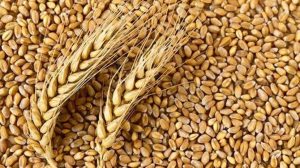Question: What is the National Crop of Pakistan?
- Maize
- Corn
- Rice
- Wheat
Answer: Wheat
Wheat is the National Crop of Pakistan

The national crop of Pakistan is wheat, a staple grain that holds immense importance for the country’s agriculture and food security. When considering what is the national crop of Pakistan, wheat emerges as a fundamental component of the Pakistani diet, providing essential nutrition for over one-third of the population. As a primary food source, it plays a critical role in sustaining the nation’s dietary needs and supporting the agricultural economy.
Wheat cultivation in Pakistan covers a substantial area of land. The crop is grown on approximately 8.5 million hectares across the country, which represents a significant portion of Pakistan’s total cropped area. This makes wheat one of the most widely cultivated crops in the region. Globally, wheat is sown on around 220 million hectares, with a total production of approximately 564.6 million tons. The extensive cultivation and high production levels reflect wheat’s status as a crucial staple food worldwide.
In Pakistan, wheat occupies about 36 percent of the total cropped area, underscoring its significance in the nation’s agricultural sector. It contributes roughly 30 percent of the value added by major crops, highlighting its economic importance. The country’s agricultural landscape is heavily influenced by wheat production, with the crop being a key driver of rural employment and economic activity.
When asking what is the national crop of Pakistan, it is essential to note that Pakistan is not only a major producer of wheat but also plays a significant role in the global wheat market. The country ranks 10th in the world for wheat production, reflecting its substantial contribution to the global supply of this vital grain. Annually, Pakistan produces around 21 million tons of wheat, making it one of the leading wheat-producing nations. The average yield of wheat per acre in Pakistan ranges from 20 to 25 mounds, which is a testament to the country’s productive agricultural practices.
The significance of wheat extends beyond its role as a staple food. It is central to Pakistan’s food security and economic stability. The crop’s production and export contribute to the country’s agricultural exports, strengthening its position in the international market. Pakistan’s wheat sector plays a crucial role in stabilizing domestic food prices and ensuring the availability of affordable food for its population.
Moreover, wheat cultivation in Pakistan involves various agricultural practices and innovations aimed at improving yield and sustainability. Efforts to enhance wheat production include the adoption of advanced farming techniques, improved seed varieties, and effective pest and disease management strategies. These initiatives are crucial for meeting the growing demand for wheat and addressing challenges related to climate change and resource management.
In addition to its economic and nutritional significance, wheat has cultural importance in Pakistan. It is a central ingredient in traditional Pakistani cuisine, featured in a variety of dishes such as chapati, naan, and paratha. The cultural value of wheat highlights its role not only as a food source but also as an integral part of daily life and social traditions in Pakistan.
What is the largest crop in Pakistan?
The largest crop in Pakistan by area and production is wheat. It plays a crucial role in the country’s agriculture and food security, occupying a significant portion of the cropped area and contributing substantially to the national economy.
What is the national crop of Punjab?
The national crop of Punjab is also wheat. Punjab is the leading wheat-producing province in Pakistan, contributing a major share of the country’s total wheat production.
Is wheat the main crop of Pakistan?
Yes, wheat is the main crop of Pakistan.

